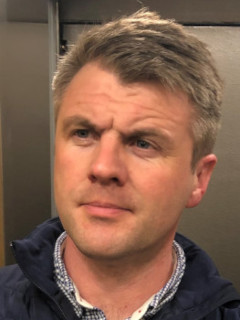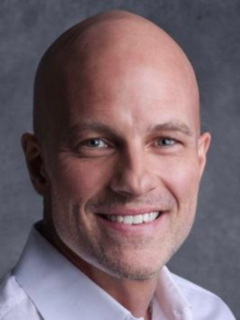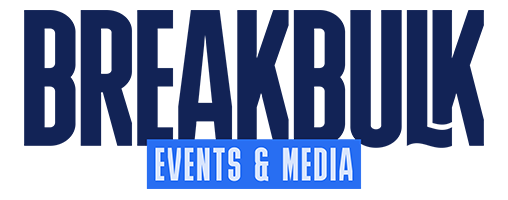UAE Races To Become E-Methanol Hub While Rivals Hesitate
_1.jpg)
By Liesl Venter
A new high-profile alliance in Abu Dhabi is exploring an e-methanol bunkering and export hub at Khalifa Port. Could this move position the UAE at the forefront of green shipping and spark fresh project cargo flows?
From Issue 6, 2025 of Breakbulk Magazine
(6-minute read)
The International Maritime Organization (IMO) agreed on Oct. 17 to adjourn its extraordinary session of the Marine Environment Protection Committee (MEPC), delaying until 2026 a decision that will shape the global shipping fuel market for decades and determine which nations lead the transition to cleaner marine fuels.
The postponement of draft amendments to MARPOL Annex VI, including the proposed IMO Net-Zero Framework, gives shipowners, operators and fuel suppliers additional time to prepare, but also creates a critical window for emerging bunkering hubs like the UAE to position themselves at the forefront of the e-methanol economy.
Member states have been urged to spend the next 12 months continuing to work toward consensus, allowing for consultation between regulators, industry groups and port authorities to ensure the framework, when adopted, is both realistic and globally implementable.
But make no mistake, the respite is short-lived. The 2050 net zero deadline looms closer than it appears. Global trade remains heavily dependent on fossil fuels and, in the context of the green transition of global supply chains, 25 years is not long to effect meaningful change.
Most experts agree that momentum toward decarbonization has been building, but the so-called hard-to-abate sectors such as shipping remain a concern. While electrification has advanced in passenger transport and light industry, energy-dense, long-haul applications require new solutions that will depend heavily on reframed policy.
The IMO’s decision to extend the MARPOL amendment timeline has nonetheless been welcomed by several emerging bunkering markets, notably the United Arab Emirates (UAE) which intends to position itself at the forefront of the transition to cleaner fuels.
The UAE has, in particular, set its sights on e-methanol. In June, AD Ports Group signed a collaboration agreement with Masdar, Advario and the CMA CGM Group to explore the feasibility of developing a state-of-the-art e-methanol bunkering and export facility at Khalifa Port.
At the time, Saif Al Mazrouei, chief executive officer, ports cluster, at AD Ports Group, said the project would provide critical infrastructure to complete the supply value chain and bridge commercial e-methanol production with key offtakers such as CMA CGM, in support of accelerating the decarbonization of the global shipping industry.
CMA CGM is investing nearly US$20 billion in a new generation of dual-fuel liquified natural gas (LNG) and methanol vessels, alongside strong partnerships to develop the ecosystems needed for alternative fuels. A spokesperson for CMA CGM told Breakbulk the agreement marked an important milestone.
“The collaboration is currently in the feasibility and concept study phase, assessing the development of fuel storage and export terminals at Khalifa Port and KEZAD, in connection with green methanol production developed by Masdar. This will also define the associated project cargo flows such as heavy-lift units, modular plants and specialized vessels, which could generate new opportunities once construction begins,” he said.
“Each partner brings complementary expertise: AD Ports Group in port and logistics infrastructure, Masdar in renewables and green hydrogen, Advario in bulk storage and CMA CGM through its global shipping network and commitment to sustainable fuels.”
Ultimately, the initiative will make green methanol compliant with international regulations and available in the UAE for bunkering and export to other major shipping hubs, directly supporting the IMO’s 2030 and 2050 decarbonization goals.
Global Hub Potential?
 For now, optimism around e-methanol’s potential is tempered by market realities. According to Stephen Lyons, managing director at Orion-5, a global consultancy and chemicals supplier, much hope had been placed on the outcome of the IMO’s recent MEPC session. “China has been a clear frontrunner in the e-methanol game,” he said, noting that a wave of projects has already gained traction there thanks to state subsidies and large-scale production capacity.
For now, optimism around e-methanol’s potential is tempered by market realities. According to Stephen Lyons, managing director at Orion-5, a global consultancy and chemicals supplier, much hope had been placed on the outcome of the IMO’s recent MEPC session. “China has been a clear frontrunner in the e-methanol game,” he said, noting that a wave of projects has already gained traction there thanks to state subsidies and large-scale production capacity.
Lyons believes the UAE could follow a similar trajectory. “I think they will throw money at it, for want of a better expression, and they will be up and running at scale way before the European market is. Europe, by contrast, risks being “way behind,” slowed by fragmented policies, limited financing and a lack of commercial readiness.
He points out that while “dozens of small projects” are emerging worldwide, many have yet to reach final investment decision (FID) because they struggle to secure long-term offtake contracts. The result, Lyons explained, is a supply gap: plenty of methanol-ready vessels are being built, but few are actually operating on methanol fuel because large-scale, reliable supply remains elusive.
That’s why the UAE’s state-backed approach could be decisive. With its financial muscle, integrated port infrastructure and partnerships such as the AD Ports–Masdar–Advario–CMA CGM collaboration, the Emirates are positioned to scale production and distribution faster than many Western markets.
If Lyons is right, early movers like the UAE, following China’s lead, may capture the first wave of exports to Europe and beyond, while others scramble to catch up once stronger IMO mandates take effect.
Geography Still Matters
 That regional dynamic, said Chris Chatterton, managing director and partner at Green Marine, a Denmark specialist in designing, building and managing methanol-fueled vessels, is precisely why regional production hubs will be critical to the e-methanol economy. “We will require these regional hubs,” he explained, noting that earlier hydrogen strategies in Europe have largely been “scuttled” as costs proved prohibitive. “Hydrogen has really been sidelined. It’s just too expensive.”
That regional dynamic, said Chris Chatterton, managing director and partner at Green Marine, a Denmark specialist in designing, building and managing methanol-fueled vessels, is precisely why regional production hubs will be critical to the e-methanol economy. “We will require these regional hubs,” he explained, noting that earlier hydrogen strategies in Europe have largely been “scuttled” as costs proved prohibitive. “Hydrogen has really been sidelined. It’s just too expensive.”
That cost challenge, Chatterton said, has helped China surge ahead, investing over US$3 trillion in renewable energy over the past three years, much of it in green hydrogen powered by onshore wind. The need for a stable energy carrier to move that hydrogen to market has made e-methanol the natural choice, at least in the near term.
“The UAE, by comparison, sits in an enviable position,” Chatterton noted. “The region has abundant solar and wind resources, which are critical for producing hydrogen, the key feedstock for e-methanol.”
He added that within the so-called Sunbelt economies, the Middle East could become one of the most cost-competitive production regions globally, outperforming Europe or parts of Asia at scale.
Chatterton also highlighted the strategic geography of the Gulf. “The UAE, and Dubai in particular, is positioned on several major shipping routes, making it very attractive for e-methanol bunkering,” he said.
With LNG facing growing criticism as a transitional fossil-based fuel, interest in e-methanol is expected to rise. “It’s definitely coming,” said Chatterton. “And perhaps faster now, as LNG’s baggage becomes more apparent.”
Challenges Remain
While the Middle East methanol market is expected to rise, the path to becoming a global e-methanol hub is, however, far from straightforward.
While Chatterton acknowledges the UAE enjoys clear natural advantages, economic and technical barriers are significant. “The major hurdles are the same everywhere: high capital and operational costs tied to electrolyzer technology, CO2 capture, compression and conversion plants,” he said.
Even with cost-competitive renewables, producing green hydrogen, the key feedstock for e-methanol, remains expensive, limiting the pace of scale-up.
“Competing against lower-cost, gas-based methanol is another risk,” Chatterton said. Without firm policy incentives or carbon pricing, conventional methanol may still be cheaper and thus preferred by fuel buyers, slowing adoption of cleaner alternatives.
Both Chatterton and Lyons believe the UAE’s biggest bottleneck lies not in hydrogen supply but in CO2 availability, particularly sustainable CO2 for e-methanol production. “For methanol to qualify as e-methanol under future IMO rules, the CO2 simply needs to be captured and come from a low-carbon source,” said Lyons. “Direct air capture is technically acceptable, but I’m not aware of any commercial projects using it yet. The technology is still in its infancy and extremely expensive. At present, most projects rely on biogenic CO2 because it is more readily available.”
He added that this creates a unique challenge for the UAE. “Unlike agricultural economies such as China, where biomass and waste feedstocks are plentiful, the UAE has no agricultural base, and never will. While hydrogen could be produced cheaply, securing sustainable CO2 at scale is the missing piece in the puzzle. Without a reliable low-carbon CO2 stream, it will be difficult for the UAE to scale production or qualify for premium low-carbon markets driving global demand.”
Investment Momentum
_1.jpg) Despite the headwinds, investment appetite across the Gulf and North Africa is accelerating at an unprecedented pace.
Despite the headwinds, investment appetite across the Gulf and North Africa is accelerating at an unprecedented pace.
Amadou Diallo, CEO of DHL Global Forwarding Middle East and Africa*, said the surge is visible across almost every market. “We’re seeing huge acceleration in the UAE, Saudi Arabia, Qatar, Egypt and Algeria and rapidly increasing demand in Morocco, Mauritania, Senegal, Nigeria and even down to Namibia and South Africa,” he told Breakbulk. “For us, industrial projects now make up nearly 30% of our business.”
According to Diallo, the UAE’s position as a logistics powerhouse is already firmly established. “Ports in Abu Dhabi and Dubai are among the most efficient globally, supported by world-class infrastructure and a deeply digitalized ecosystem.”
This combination of efficiency, regulatory agility and openness makes the Gulf states, particularly the UAE and Saudi Arabia, uniquely suited to lead the new-energy transition.
“Hydrogen and its derivatives are becoming central to national strategies, part of the 2030 and 2040 visions in the UAE,” he said. “The region’s solar potential, access to affordable energy and proximity to Africa’s emerging markets make it the perfect platform for scaling production and distribution.”
He believes this wave of energy-linked development will unlock a new era of industrial project logistics across the region. “We’re already moving major EPC cargo into ports from Morocco to Namibia, supporting mining, hydrogen and port-expansion projects.”
For Diallo, it’s not only about resources, but also skills and readiness. “Across the UAE there is heavy investment in project-talent training programs, developing engineers and logistics specialists who can adapt, relocate and deliver,” he said. “That flexibility is key as the energy transition accelerates and the UAE cements its role as both a hub and a springboard into other regions.”
According to Chatterton, there are now between 225 and 250 renewable methanol projects under development globally, an almost even split between biomethanol and e-methanol.
“It’s roughly a third in China, a third across the Americas and another third in Europe. That’s a remarkable shift,” he said. “Eighteen months ago, around 80% of projects were concentrated in China. What we’re seeing now is the rest of the world catching up, recognizing the opportunity that renewable methanol represents.
“The UAE has clearly indicated its interest. It would be unwise to underestimate its capability. Historically, if you look at how quickly they’ve developed their cities and ports compared to the rest of the world, they’re exceptionally good at catching up, and even surpassing. They’re undoubtedly the dark horse to watch.”
*Since the time of writing, Amadou Diallo has moved to Aramex to become group CEO.
Breakbulk Middle East 2026 is happening on 4-5 February in Dubai.
Top photo: CMA CGM IRON, the group’s first dual-fuel methanol vessel, at Khalifa Port. Credit: AD Ports
